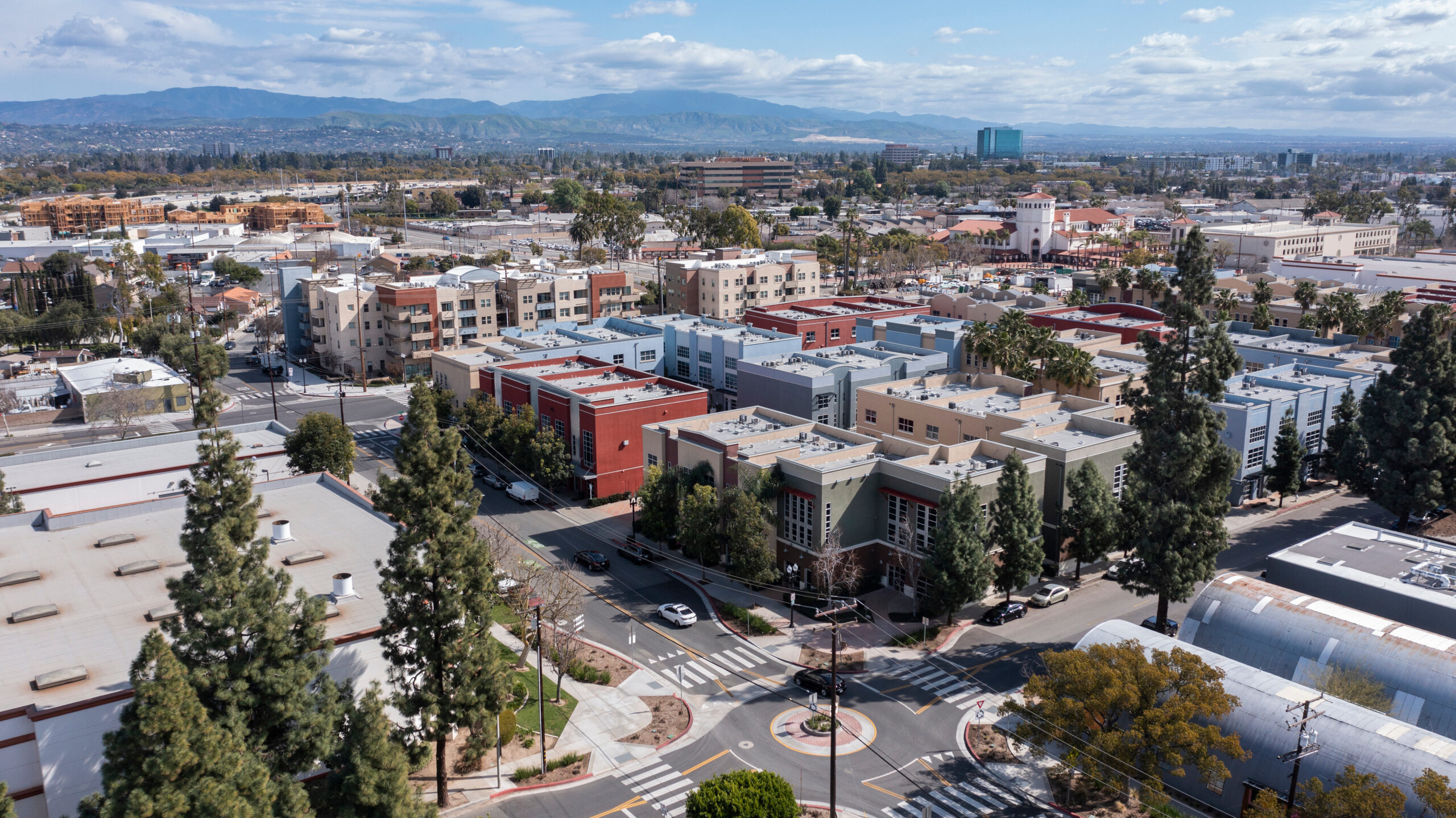Continuing our series, From Ivory Towers to Main Streets, we explore the gritty realities of urban development. In this series, we challenge conventional economic theory, academic research, and top-down urban planning approaches by confronting them with real-world examples. Economic development is too often seen through the lens of planners, bureaucrats, and academic think tanks, who treat cities like laboratories for their theories. However, true economic development is messy, unpredictable, and deeply tied to the unique dynamics of individual communities. This series will break down those Ivory Tower concepts and reframe them into practical, community-based approaches that prioritize the people who live and work in these neighborhoods.
In today’s article, we kick off a 3-article miniseries by drawing lessons from two cities: Santa Ana, California, and Miami Beach, Florida, where heavy-handed, top-down redevelopment strategies led to displacement, devalued properties, and a failure to engage with the needs of existing businesses and residents.
In October 2024, Reason published an article highlighting the controversy surrounding Santa Ana’s renewed efforts to rezone and redevelop its SD-84 Transit Zone. The city’s attempt to create a high-density, transit-oriented district mirrors many urban planning strategies that have swept through cities across the U.S. over the past few decades. But, as we’ve seen in both Santa Ana and in Miami Beach’s South Pointe neighborhood nearly 50 years earlier, these kinds of top-down redevelopment efforts often come at a steep cost.
In both cases, city officials imposed building permit moratoriums to freeze development and clear the way for larger-scale plans, effectively stopping economic activity in its tracks. While intended to promote future growth, these moratoriums failed to account for the existing businesses, local jobs, and communities already tied to the land. As a result, both Santa Ana and South Pointe became cautionary tales of how bureaucratic overreach can lead to economic stagnation, displacement, and missed opportunities.
In Santa Ana, the city’s moratorium on approving, expanding, or modifying industrial uses in the SD-84 Transit Zone is meant to make way for new housing projects to solve the state’s housing crisis. While this goal is commendable, the lack of outreach to affected business owners and the speed at which the policy was implemented have left many industrial property owners and businesses struggling. These businesses, some of which have invested in the community for decades, are suddenly left in regulatory limbo, unable to expand or even make basic improvements to their properties. As Steven Greenhut reported in Reason, the city’s actions have devalued industrial land by as much as 75% in some cases.
This situation eerily echoes Miami Beach’s South Pointe moratorium of the late 1970s, when the city halted development in a deteriorating neighborhood to facilitate a grand urban renewal scheme. The city envisioned razing much of the existing housing and replacing it with luxury condos, hotels, and high-end retail. But during the moratorium, property values plummeted, local businesses struggled, and the area languished in uncertainty for years before any meaningful development occurred.
Both Santa Ana and South Pointe exemplify the fundamental problem with top-down urban planning: it focuses on theoretical visions of what a city “should be” rather than what a city is and prioritizes future potential over current realities. Bureaucrats and planners see moratoriums as tools to clear the slate for redevelopment. Still, they often fail to understand that these actions disrupt the local economy, threaten the livelihoods of those who make these areas vibrant, and negatively impact the city’s place brand.
In Santa Ana, the businesses affected by the moratorium are not just abstract economic units—they are places where people have invested their lives, created jobs, and contributed to the city’s tax base. By freezing industrial development without offering a clear path forward, the city is forcing out established industries that have been cornerstones of the community for years. This reflects a similar dynamic in South Pointe, where low-income residents and businesses were treated as obstacles to be cleared, rather than as stakeholders in the area’s future.
What Santa Ana and South Pointe Got Wrong
- Ignoring the Importance of Cash Flow: The success of any business, and by extension, the economic health of a city, depends on cash flow. When cities impose moratoriums that prevent businesses from investing in their properties, they effectively cut off this essential lifeblood. Businesses in Santa Ana are being told they cannot expand or even update their buildings, leaving them in a financial limbo. This is similar to what happened in South Pointe, where property owners saw their investment opportunities evaporate as their development ability was frozen. Real economic development requires a deep understanding of how policies impact the day-to-day financial realities of local businesses, something both Santa Ana and South Pointe failed to account for.
- Devaluing Existing Assets: Santa Ana’s moratorium is causing land values to plummet, devaluing businesses that have operated there for decades. The city essentially tells property owners that their land is no longer as valuable because it is being held in limbo for future residential development. In South Pointe, a similar decline occurred as properties were devalued under the shadow of an uncertain redevelopment future. Cities must recognize the economic and social value of what already exists rather than treating current land uses as disposable in favor of speculative development.
- Displacement in the Name of Progress: Both Santa Ana and South Pointe demonstrate how top-down planning leads to displacement disguised as progress. In Santa Ana, businesses are being pushed out to make way for housing, while in South Pointe, low-income residents were forcibly displaced to make room for luxury condos. While the cities claimed they were working toward a greater good, the reality is that their policies disrupted lives and created long-term economic harm. And remember that the “greater good” is always defined by someone else.
At the heart of these failures is disregarding the local, on-the-ground realities essential for any meaningful economic development. The lessons from South Pointe’s failed top-down redevelopment plan are clear, but Santa Ana seems to repeat the same mistakes. Cities that impose moratoriums and massive rezoning plans without engaging the community or considering the current economic ecosystem end up causing more harm than good.
Real economic development requires getting your hands dirty. It requires working with businesses, understanding the flow of capital, respecting property rights, and acknowledging that cities are built by their residents and entrepreneurs, not by planners in offices or bureaucrats in city hall. The lesson from both Santa Ana and South Pointe is simple: urban renewal, redevelopment, and revitalization must be grounded in reality, not in abstract visions of the future.
In the next articles in this series, we’ll delve deeper into how these kinds of moratoriums and zoning changes are used across cities, often leading to displacement and economic stagnation. We’ll also explore what it means to balance preservation and enhancement in ways that promote growth without sacrificing the social and economic fabric of existing neighborhoods.




Comments are closed